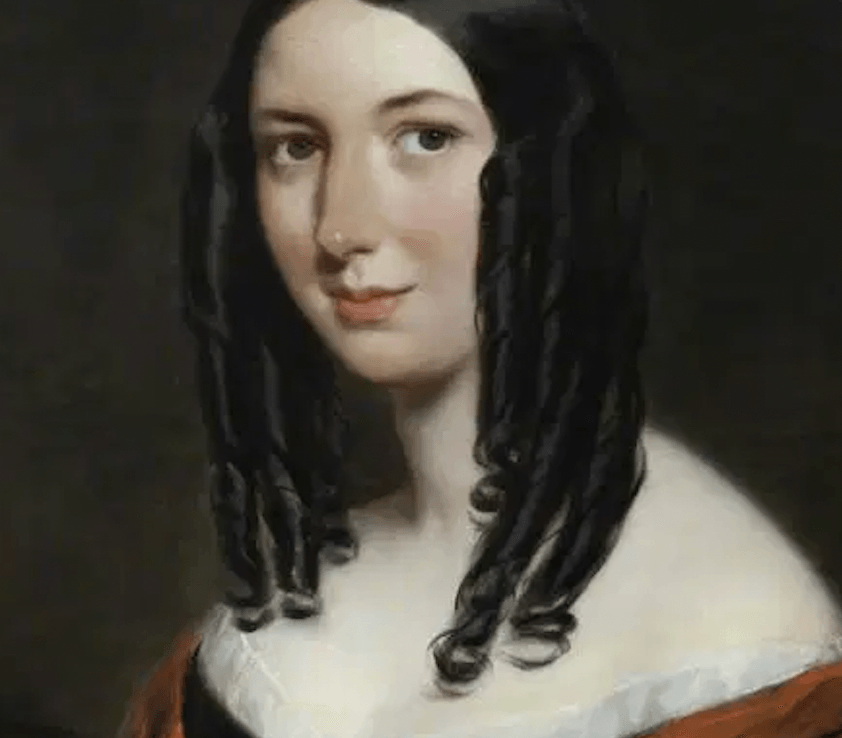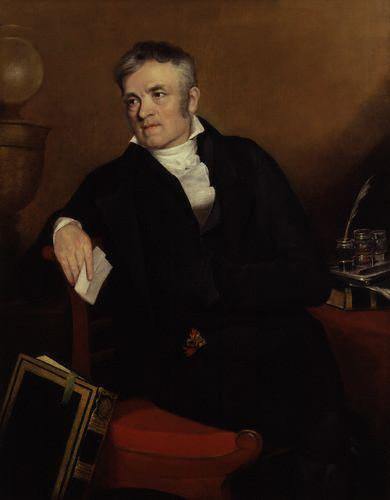Hannah More and Jane Austen: Mary Crawford and Jane Fairfax
Hannah More was a notable figure in her day, her opinions and and beliefs on all matters moral and political being widely read, courtesy of the numerous tracts and pamphlets she published. As a reading woman, Jane Austen would have been well versed in these hotly debated issues of the day, such as slavery and women's rights. Although she rarely writes directly about social issues in her novels, here are two examples of where I see Jane Austen subtly demonstrating herself to sharply diverge from Hannah More on some important matters of morality and religion. A short time ago, Alistair Duckworth directed me to a complex allusion in Mansfield Park to Hannah More's lengthy 1791 tract An Estimate of the Religion of the Fashionable World. Subsequently I delved more deeply into Austen's literary reactions to that tract, and focused in particular on the following passage where Hannah More trained her sights squarely on "the fashionable world" and its role as a moral corrupter:
"...prudent skepticism has wisely studied the temper of the times, and skilfully felt the pulse of this relaxed, and indolent, and selfish age. It prudently accommodated itself to the reigning character, when it adopted sarcasm instead of reasoning, and preferred a sneer to an argument. It discreetly judged, that, if it would now gain proselytes, it must show itself under the bewitching form of a profane bon-mot; must be interwoven in the texture of some amusing history, written with the levity of a romance, and the point and glitter of an epigram; it must embellish the ample margin with some offensive anecdote or impure allusion, and decorate impiety with every loose and meretricious ornament which a corrupt imagination can invent. It must break up the old, flimsy system into little mischievous aphorisms, ready for practical purposes; it must divide the rope of sand into little portable parcels, which the shallowest wit can comprehend, and the shortest memory carry away."All of the underscored words resonate in some significant way to the Crawfords in Mansfield Park, in particular to Mary. But what is most interesting is how Jane Austen seems to go along with that thinking in terms of how Edmund and Mary parse moral situations, and yet at other times she seems to put the shoe on the other foot. How? Look at the word "indolent" or "indolence", which is used far more in Mansfield Park than in any other Austen novel--many of the usages describe Lady Bertram, who seems to be the quintessence of indolence. And look at the word "selfish", which is used several times in the same novel to describe Henry Crawford, and also, with such cruel and absurd unjustness, by Sir Thomas to refer to Fanny. There are, however, other usages of those terms which come out of the mouth of Mary Crawford, and they pertain to her brother-in-law, the clergyman Dr. Grant. Here are Mary's two comments about Dr. Grant which sound to me like veiled allusions to More's 1791 tract:
"...And though Dr Grant is most kind and obliging to me, and though he is really a gentleman, and, I dare say, a good scholar and clever, and often preaches good sermons, and is very respectable, I see him to be an indolent, selfish bon vivant, who must have his palate consulted in everything; who will not stir a finger for the convenience of any one; and who, more over, if the cook makes a blunder, is out of humour with his excellent wife. ......It is indolence, Mr Bertram, indeed. Indolence and love of ease; a want of all laudable ambition,of taste for good company, or of inclination to take the trouble of being agreeable, which make men clergymen. "And for good measure, even before Mary utters these judgments on her brother in law, we have the acid-tongued narrator pointing the way:
"It delighted Mrs Grant to keep them both [i.e., Mary and Henry} with her, and Dr Grant was exceedingly well contented to have it so: a talking pretty young woman like Miss Crawford is always pleasant society to an indolent, stay-at-home man; and Mr Crawford's being his guest was an excuse for drinking claret every day. "And, apropos Mary Crawford's reference to Dr. Grant's "palate", it turns out that in Coelebs, we even have the morally scrupulous protagonist himself opining about this very subject of palate consultation in a similar way:
'Surely,' said I, ' (L'Almanac des Gourmands at that instant darting across my mind,) 'it is as honourable for a gentleman to excel in critical as in culinary skill. It is as noble to cultivate the intellectual taste, as that of the palate. It is at least as creditable to discuss the comparative merits of Sophocles and Shakespeare, as the rival ingredients of a soup or a sauce."What I hear in all of the above is Jane Austen's hoisting Hannah More on her own rhetorical petard---if it is fair game for More to take a critical close look at the behavior of the fashionable world epitomized by Henry and Mary Crawford, it should also be fair game for a canny observer from the fashionable world, like Mary Crawford, to take an equally critical close look at the behavior of the clergy, who are in More's way of seeing things supposed to be the moral shepherds for the rest of us, and to point out that it's no so simple as More presents, in her claiming that the fashionable world is the biggest culprit. Or, to indulge myself for a moment in some wordplay, what's good for the goose (whether green or not) is also good for the gander! A second veiled allusion to Hannah More which I find in Austen's novels is in Emma, and is in the famous retort by Jane Fairfax to Mrs. Elton about governessing being akin to slavery: “the sale—not quite of human flesh—but of human intellect...” It turns out, perhaps to the surprise of some, that Hannah More wrote a short and very odd satirical essay sometime during the 1790's entitled The White Slave Trade, subtitled Hints toward framing a Bill for the Abolition of the White Female Slave Trade, in the Cities of London and Westminster. The piece is a little too long to reproduce here, but the gist of it is that it takes the real-life noble movement (of which More was herself a strong supporter) to abolish the enslavement of Africans on English colonial plantations, and issues a mock-exhortation to extend that same thinking in order to liberate women from the exigencies of "Fashion", which is the "arbitrary, universal tyrant" she blames for the "slavery" that white Englishwomen endure during courtship and marriage. She takes the metaphor very far, referring to chains, enforced exile from one's home, crowded courtship meat market milieus like Catherine Morland experiences in the Pump Room in Bath as being akin to slave trade ships crammed with slaves and slave auction markets, etc etc. She takes particular notice of "coming out", which of course is what Tom Bertram and Mary Crawford discuss in Mansfield Park. It's clear to me that Jane Austen has read this essay, and is playing with it in the scene when Jane Fairfax makes her famous comment, and Mrs. Elton calls herself a "friend of the abolition". Here is the climax of More's piece; I will give my brief remaining comments at the end :
From all the above causes it is evident, that the white slave trade has increased, is increasing, and ought to be diminished. Till, therefore, there be some hope that a complete abolition may be effected, the following regulations are humbly proposed: — Regulation I. That no slave be allowed to spend more than three hours a day in preparing her chains, beads, feathers, and other implements for the nightly labour. II. That no slave be allowed to paint her person of more than two colours for any market whatever. III. That each slave be allowed at least sufficient covering for the purposes of delicacy, if not for those of health and comfort. IV. That no /little /slave be compelled to destroy her shape, and ruin her health, by being fastened to different instruments of torture, for the sake of extracting sweet sounds, till some time after she can walk alone; and that in her subsequent progress she be not obliged to sit or stand at it more than half her waking hours. V. That no slave be put under more than four posture masters, in order to teach her such attitudes and exercises as shall enable her to fetch more money in the markets. VI. That no slave be carried to more than three markets on the same night. VII. That no trader be allowed to press more slaves into one /hold /than three times as many as it will contain. VIII. That the same regard to comfort which has led the black factor to allow the African slaves a ton to a man be extended to the white slaves, who shall not be allowed less than one chair to five slaves. IX. That no white slave /driver, /or horses, be allowed to stand in the street more than five hours in a dry night, or four in a rainy one. X. That every elderly female slave, as soon as her youngest grandchild is fairly disposed of, be permitted to retire from her more public labours without any fine or loss of character, or any other punishment from the despot. To conclude: — the Black Slave Trade has been taken up by its opposers, not only on the ground of inhumanity and impolicy, but on that of Religion also. On the two first points alone have we ventured to examine the question of the White Slave Trade. It would be a folly to enquire into it on this last principle; it /can /admit of no such discussion, as in this view it could not stand its ground for a single moment; for if that principle were allowed to operate, mitigations nearly approaching to abolition must inevitably and immediately take place.There are two levels on which I see Jane Austen critiquing More. First, I think Mrs. Elton is a veiled representation of Hannah More, to illustrate the hypocrisy of a woman who would not realize that it was grossly insensitive to think that this satire was appropriate on any level; and also because of missing the point entirely, which is that there were plenty of injustices wreaked on Englishwomen in that era which were real, substantial and awful. So More in her essay has somehow managed to be offensive both to brave abolitionists like Clarkson and Sharpe, and also to women like Jane Austen who saw the true source of oppression of Englishwomen as being the patriarchal male-dominated power structure.
Arnie Perlstein is an independent scholar (still) working on a book project about the SHADOW STORIES of Jane Austen's novels (and Shakespeare's plays).Visit his blog, sharpelvessociety.blogspot.com for further Austen sleuthing.




Leave a comment
This site is protected by hCaptcha and the hCaptcha Privacy Policy and Terms of Service apply.